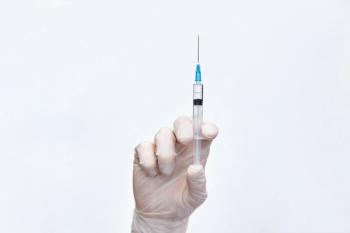
- Drug Topics July 2021
- Volume 165
- Issue 7
Lessons Learned from the COVID-19 Vaccine Rollout
Pharmacists reflect on their takeaways from the experience and how to move forward.
This past year, pharmacists faced unprecedented challenges with the rollout of the COVID-19 vaccines, as tens of millions of Americans fought to be among the first to get their shot. As of June 14, approximately 145 million Americans were fully vaccinated, and pharmacists, for the most part, have been able to standardize their procedures for vaccine distribution. But that wasn’t the case at the beginning of the rollout.
Kevin DeMass, RPh, owner of the Apothecary Shoppe in Salt Lake City, Utah, has more than 30 years of experience in the field. He noted that the important lesson he learned from the vaccine rollout was the need for patience.
“It seems that phase 1 took forever and we were in constant communication with our patients, providers, and even the Department of Health to find out what was going on,” he said. “And it certainly wasn’t a smooth process from the get-go.”
For instance, the state’s website crashed almost daily with patients trying to make appointments, and the vaccine supply ebbed and flowed with no predictability. Plus, he found many of his regular patients didn’t want to go into a mass immunization center and wanted his pharmacy to administer the vaccine.
“They were frustrated with the system, and we were as well,” DeMass said. “In many places in our country, patients were asked to go to a strange place to receive a strange drug that they knew nothing about. We haven’t really done anything like that before. Independent pharmacies have built a relationship and trust with their patients for years, and they relied on us, but we didn’t have anything to give them.”
Although that was frustrating to him, he knew not to let that show, as he didn’t want that frustration to spill over to his patients. He described an encounter with a longtime African American customer who refused to allow anyone but DeMass to administer the vaccine because of uncertainty and fear. DeMass worked with him to make that happen as soon as the pharmacy received doses.
“I did a lot of reading online, looked at journals, called friends in New York and California to see what they were doing…and learned from them,” DeMass said.
DeMass said he also learned not to compare what he was doing to pharmacies in different cities.
“We’re all going at different paces,” DeMass said. “You need to know what you can do with your staff to make the experience as smooth as possible. We took lessons we saw from others and improved efficiencies as we went into phase 2.”
Ghaidaa Najjar, PharmD, PhD, community pharmacist for Rite Aid in Plymouth, Michigan, added that the process was confusing and inefficient at the beginning for both patients and the pharmacy.
“I had elderly patients walking in, thinking they would be automatically signed up for the vaccine,” she said. “They did not have smartphones, they may not have children or grandchildren who can help due to the social distancing and they struggled because of isolation.”
She believes there should have been cohesive alignments in terms of eligibility among federal, state, and county entities when pharmacies had to serve the public based on certain criteria.
“People were confused, because a mile from where you live, your neighbors could be getting vaccine way ahead of you,” Najjar said. “Inequality was manifested by preferring some states to get vaccines before others. The category differences within the same state and local counties were also discriminating people and added more confusion. If we could go back, equitable distribution to all states should be the standard.”
According to Heather Ferrarese, PharmD, owner of Bartle’s Pharmacy in Oxford, New York, no one is ever really prepared for something like a global pandemic, even when they think they are. From her perspective, careful communication and planning are most important in adapting to the unpredictability a public health crisis brings.
“To anticipate having the vaccine, then to have it delayed time and time again, was definitely something we learned from, especially about how to plan and communicate,” she explained. “Once we did get the vaccine, it was a complete learning curve to pull off vaccinations on such a large scale and figure out where to vaccinate so many people. Those were some of the key takeaways from this experience. Thankfully, most people have been very gracious. They understand this is something none of us have ever been through before.”
For many pharmacies, implementing COVID-19 vaccinations was a significant trial-and-error process that resulted in plenty of mistakes. Pharmacies had to adjust their workflows and services to fit their community’s needs.
“The 2 biggest areas were workflow improvement in the pharmacy and improving efficiency and capacity during vaccinations,” said Mark McCurdy, RPh, an independent pharmacist from Mark’s Pharmacy in Cambridge, Nebraska.
Being in a rural area, the pharmacy works closely with the local health department. It offered vaccination events in multiple locations in 4 of the 9 counties in its service area.
“The goal was to identify the highest-risk and highest-need patients and provide them easy access to care,” McCurdy said. “So aside from the original crush of patients seeking vaccine, we also were faced with logistics of site coordination, travel, and time on making these events happen. Once supply outpaced demand, the biggest challenge has been maintaining interest in receiving the vaccine and filling available appointments. We have struggled to get information to the right places and reach the right people.”
Jasmine Chan, PharmD, chief operating officer at Central Avenue Pharmacy in Pacific Grove, California, said because her pharmacy was a little late in getting vaccines, she was able to learn from the challenges that others were facing, notably with schedules and communication with patients.
“I got to marinate on how we could do it better,” she said. “Organization was key. I like lists, I [like] Excel sheets, but very quickly we learned we can’t overorganize this. We had to be flexible and roll with it.”
She feels the biggest thing she learned was how to navigate to the need of the individual patient. For example, the pharmacy served a lot of hospice patients, and Chan needed to best figure out appointments, transportation, and all the logistics in getting the vaccine to those patients.
“There were people with language barriers, those with no legal status in the United States, so we had to change our process for each of those barriers and break them down to make sure everyone was properly serviced,” Chan said. “Many of these people couldn’t leave during their work day, yet many clinics were only open 10 to 4.”
Chan’s pharmacy set up clinics near workplaces, such as golf courses for greenskeepers and even in homes where maids were employed, to help improve access to those patients.
Correcting Mistakes
Miscalculating the time needed to process paperwork, distribute vaccine cards to patients, and schedule second appointments proved to be one of the biggest mistakes, according to Ferrarese.
“We have been administering vaccines for many years, so we thought we had that down, but we weren’t prepared for all of the questions that customers had and how much more time that would take,” she said. “We also had concerns about keeping people socially distanced, and at first, we were overly aggressive trying to vaccinate too many people. We learned our staff needed to stay in close communication with each other on how things were going.”
Furthermore, the team needed to securely share patient health information, such as insurance cards, and that proved to be more difficult than originally thought.
“When we got to the point where we couldn’t handle so many people within our pharmacy, we set up a vaccination site at our local fire department,” Ferrarese said. “We used Backline from DrFirst to securely communicate with staff who were on-site at the fire department, and they were able to reach those of us who were at the pharmacy.”
One of the biggest mistakes DeMass made was underestimating the entire process from beginning to end, including time, reporting, record keeping, labor consumption, and more.
“My calculations were based on my previous immunization experience with patients in our database,” he said. “But this threw us a hard curveball. It was a little bit scary. Every day, we were adding new patients into our database. Claim after claim, patient after patient. We didn’t have any existing data so it was a very time-consuming process.”
In the beginning, DeMass was having patients fill out the intake paperwork, a qualifying questionnaire, and billing information right in the pharmacy so he could provide a good experience with hopes of getting some repeat business.
“That was a big mistake and we changed that quickly,” he said. “I pushed all of that to our website. All information, scheduling, [adverse] effect information, and everything else was available on the site, which had been underutilized for months and years, but now patients are using it daily.”
Smoothing Operations
In an effort to adapt to the increasing needs of the public, pharmacists and pharmacy technicians across the country quickly set up off-site clinics and walk-up vaccination locations.
“The pharmacist’s role in health care has been greatly expanded in recent years due to our ability to adapt and seek new ventures, along with the great amount of trust that patients have in their pharmacist,” said Aaron Gilbert, PharmD, a pharmacist in Louisville, Kentucky.
Now, the Apothecary Shoppe has preloaded the vaccine into the pharmacy dispensing system and hard-coded the billing and drug utilization review codes, making the flow much easier and increasing the efficiency in processing claims.
“We also preprinted COVID-19 prescription pads and we had all of the info on there that insurance companies would require,” DeMass said.
He also contacted his landlord about extra space and was able to use 3500 square feet directly above the pharmacy to create a COVID-19 vaccination clinic.
“It took more staff than we could handle, so I begged some of my professors from the University of Utah to come and help us and they have been very gracious volunteering their time,” DeMass said.
A Regular Vaccination?
There is still conflicting information on whether the COVID-19 vaccination will need to be administered annually like the flu shot, with most experts believing a booster shot will be necessary, but research is still underway to know exactly when.
“As the need for additional COVID-19 vaccinations is still unknown, there is the possibility that pharmacists will play an increasing role in helping the community protect itself from the deadly virus,” Gilbert said. “But what we have seen once again is that pharmacists are stepping up to the plate and making a difference in patient care.”
DeMass said that although he’s not sure if COVID-19 vaccines will become routine, he knows the experience gained over the last 6 months has positioned pharmacists on the front line and put them in place to be a health and wellness destination.
“Now more than ever, the local pharmacy is a trusted health care provider, and the rollout in any future health crisis will happen much more quickly,” he said. “On the positive side, public awareness has been increased on the vaccine process and its importance.”
Money Matters
The vaccine is free to everyone, but pharmacists still need to be reimbursed for their efforts, as they are spending thousands of hours planning and executing to get the vaccine in the arms of whoever needs it.
“I’m still waiting for approval from [the Department of Health and Human Services] and waiting for a third-party check and Medicaid checks to be cut,” DeMass said. “Many pharmacists are still working for free to care for the most vulnerable, high-risk, and disadvantaged citizens of our community. The public needs to be made aware of that.”
Articles in this issue
over 4 years ago
Novel Antifungal Treatment Approved for Vaginal Candidiasisover 4 years ago
What I Learned From 40 Years in Pharmacyover 4 years ago
The Evolution of Pharmacogenomicsover 4 years ago
Naloxone: A Primer for Pharmacistsover 4 years ago
Childhood Vaccines During COVID-19 and Beyondover 4 years ago
Irritable Bowel Syndrome: A Look at the Treatment LandscapeNewsletter
Pharmacy practice is always changing. Stay ahead of the curve with the Drug Topics newsletter and get the latest drug information, industry trends, and patient care tips.











































































































































































































